Taxonomy of Penicillium section Citrina
- PMID: 22308046
- PMCID: PMC3233908
- DOI: 10.3114/sim.2011.70.02
Taxonomy of Penicillium section Citrina
Abstract
Species of Penicillium section Citrina have a worldwide distribution and occur commonly in soils. The section is here delimited using a combination of phenotypic characters and sequences of the nuclear ribosomal RNA gene operon, including the internal transcribed spacer regions ITS1 and ITS2, the 5.8S nrDNA (ITS) and partial RPB2 sequences. Species assigned to section Citrina share the production of symmetrically biverticillate conidiophores, flask shaped phialides (7.0-9.0 μm long) and relatively small conidia (2.0-3.0 μm diam). Some species can produce greyish-brown coloured cleistothecia containing flanged ascospores. In the present study, more than 250 isolates presumably belonging to section Citrina were examined using a combined analysis of phenotypic and physiological characters, extrolite profiles and ITS, β-tubulin and/or calmodulin sequences. Section Citrina includes 39 species, and 17 of those are described here as new. The most important phenotypic characters for distinguishing species are growth rates and colony reverse colours on the agar media CYA, MEA and YES; shape, size and ornamentation of conidia and the production of sclerotia or cleistothecia. Temperature-growth profiles were made for all examined species and are a valuable character characters for species identification. Species centered around P. citrinum generally have a higher maximum growth temperature (33-36 °C) than species related to P. westlingii (27-33 °C). Extrolite patterns and partial calmodulin and β-tubulin sequences can be used for sequence based identification and resolved all species. In contrast, ITS sequences were less variable and only 55 % of the species could be unambiguously identified with this locus.
Taxonomic novelties: Penicillium argentinense Houbraken, Frisvad & Samson, P. atrofulvum Houbraken, Frisvad & Samson, P. aurantiacobrunneum Houbraken, Frisvad & Samson, P. cairnsense Houbraken, Frisvad & Samson, P. christenseniae Houbraken, Frisvad & Samson, P. copticola Houbraken, Frisvad & Samson, P. cosmopolitanum Houbraken, Frisvad & Samson, P. neomiczynskii Cole, Houbraken, Frisvad & Samson, P. nothofagi Houbraken, Frisvad & Samson, P. pancosmium Houbraken, Frisvad & Samson, P. pasqualense Houbraken, Frisvad & Samson, P. quebecense Seifert, Houbraken, Frisvad & Samson, P. raphiae Houbraken, Frisvad & Samson, P. terrigenum Seifert, Houbraken, Frisvad & Samson, P. ubiquetum Houbraken, Frisvad & Samson, P. vancouverense Houbraken, Frisvad & Samson, P. wellingtonense Cole, Houbraken, Frisvad & Samson.
Keywords: citreoviridin; citrinin; phylogeny; soil fungi; taxonomy.
Figures




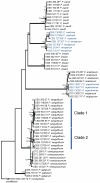


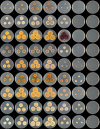
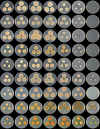







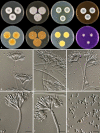


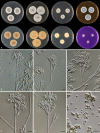

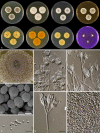
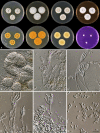



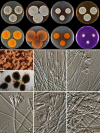



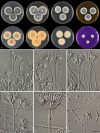


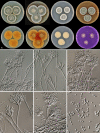




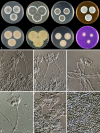


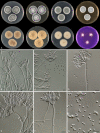
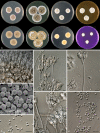






References
-
- Abe S. (1956). Studies on the classification of the Penicillia. Journal of General and Applied Microbiology 2: 1–193
-
- Baghdadi VC. (1968). De speciebus novis Penicilli Fr. et Aspergilli Fr. E terries Syriae isolatis notula. Novitates Systematicae Plantarum non Vascularium 7: 96–114
-
- Belofsky GN, Gloer JB, Wicklow DT, Dowd PF. (1995). Anti-insectan alkaloids. Shearinines A-C and a new paxilline derivative from the ascostromata of Eupenicillium shearii. Tetrahedron 51: 3959–3968
-
- Beyma Thoe Kingma FH van. (1940). Beschreibung einiger neuer Pilzarten aus dem Centraalbureau voor Schimmelcultures, Baarn (Nederland) VI. Antonie van Leeuwenhoek 6: 263–290 - PubMed
-
- Brefeld O. (1874). Botanische Untersuchungen über Schimmelpilze. Heft 2. “Die Entwicklungsgeschichte von Penicillium”. Leipzig: A. Felix;
LinkOut - more resources
Full Text Sources
Other Literature Sources
